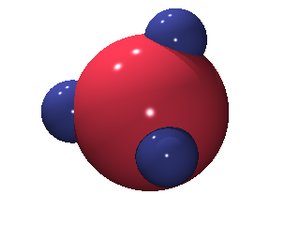Anisotropic particles with tetrahedral symmetry

The phase diagram of the tetrahedral Kern and Frenkel patchy model exhibits the following solid phases[1][2]: diamond crystal (DC), body centred cubic (BCC) and face centred cubic (FCC). The gas-liquid critical point becomes metastable with respect to the diamond crystal when the range of the interaction becomes short (roughly less than 15% of the diameter).
In contrast to isotropic models, the critical point becomes only weakly metastable with respect to the solid as the interaction range
narrows (from left to right in the figure).
See also
References
- ↑ Flavio Romano, Eduardo Sanz and Francesco Sciortino "Role of the Range in the Fluid−Crystal Coexistence for a Patchy Particle Model", Journal of Physical Chemistry B 113 pp. 15133–15136 (2009)
- ↑ Flavio Romano, Eduardo Sanz and Francesco Sciortino "Phase diagram of a tetrahedral patchy particle model for different interaction ranges", Journal of Chemical Physics 132 184501 (2010)
